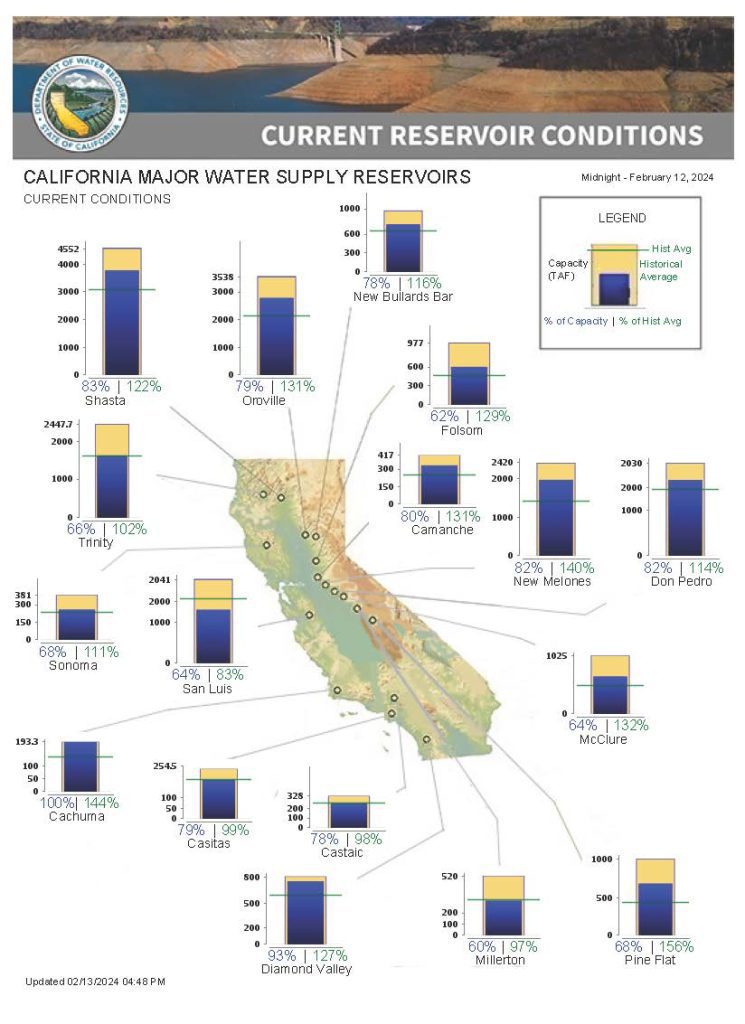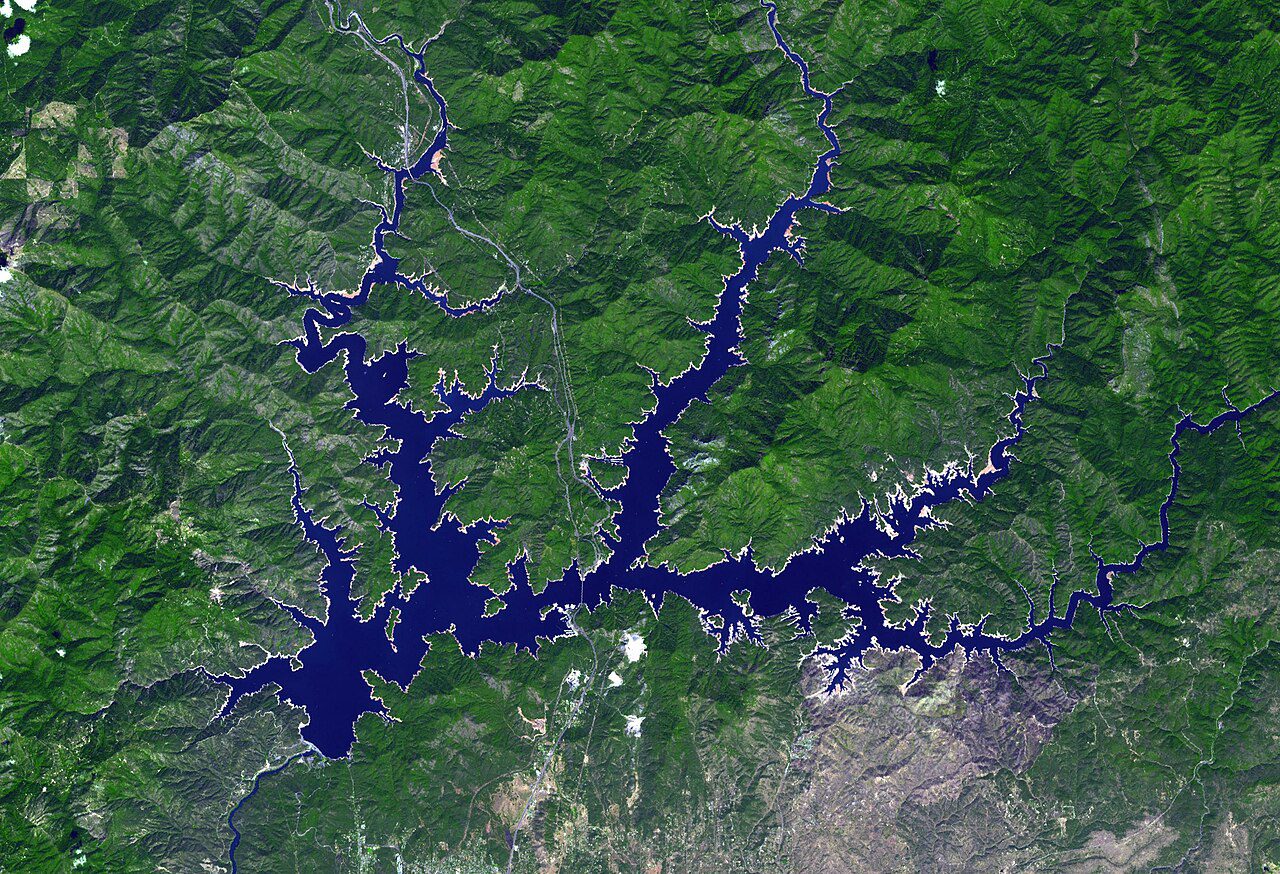- Most of California’s major reservoirs exceed historic averages
- Some are even closer to full capacity.
- This marks a dramatic shift from drought conditions.
- Recent intense storms fueled the increase.
February 14, 2024 — California’s water worries are easing significantly as many reservoirs across the state have filled well above their historical averages after a series of powerful winter storms. Data from the Department of Water Resources shows this welcome change.
shows this welcome change.
-
Shasta Lake, Northern California’s largest reservoir, stands at 83% capacity, 122% of its historical average. Built in the 1940s, Shasta is crucial for water supply and flood control.
-
Lake Oroville, another key Northern California reservoir, boasts levels of 79% capacity with a generous 131% of its historic average.
-
Several other reservoirs, including New Bullards Bar, Folsom, Trinity, Camanche, New Melones, Don Pedro, McClure, and Pine Flat, also show levels significantly above their historical averages. Some, like Cachuma in Southern California, are at full capacity.
The above-average water levels are undoubtedly fueled by recent storms, particularly atmospheric rivers, that battered the state since January 1st. These storms dumped huge quantities of rain and built up snowpack across the Sierra Nevada mountains.




Leave a Reply